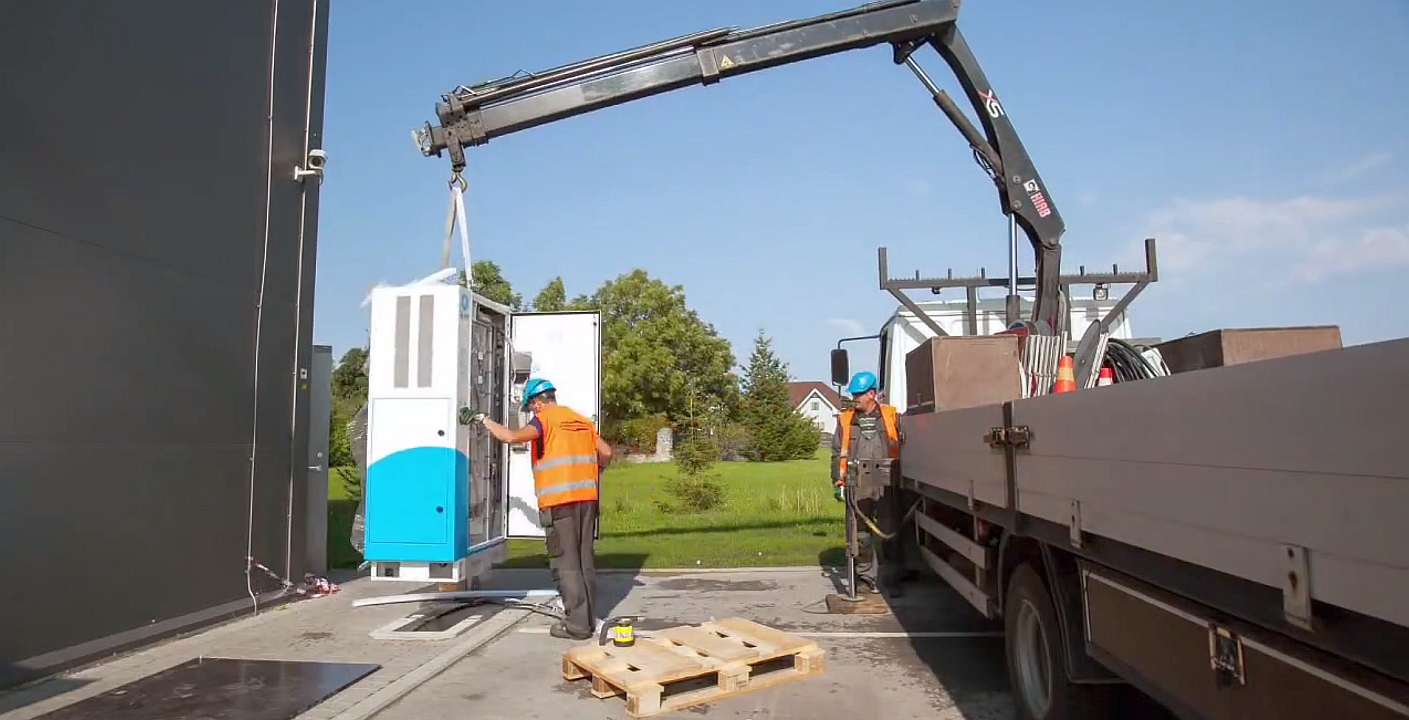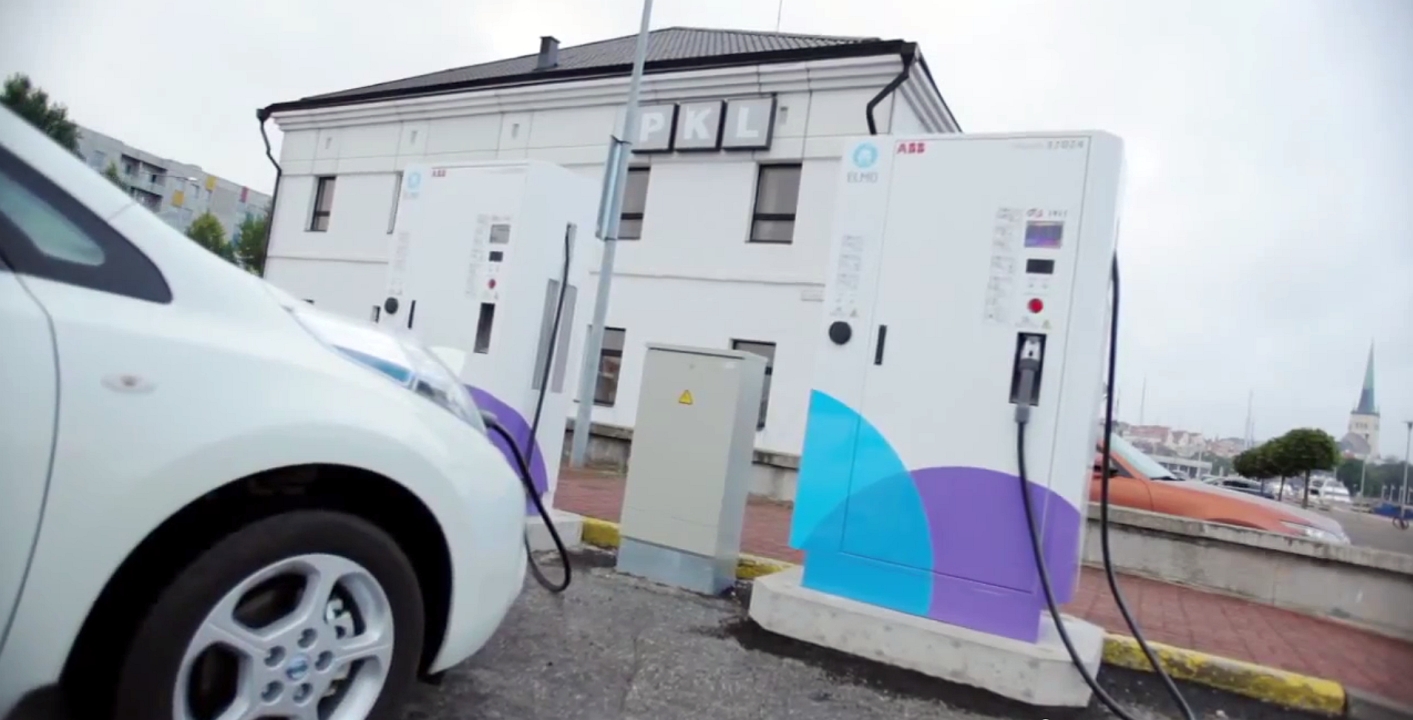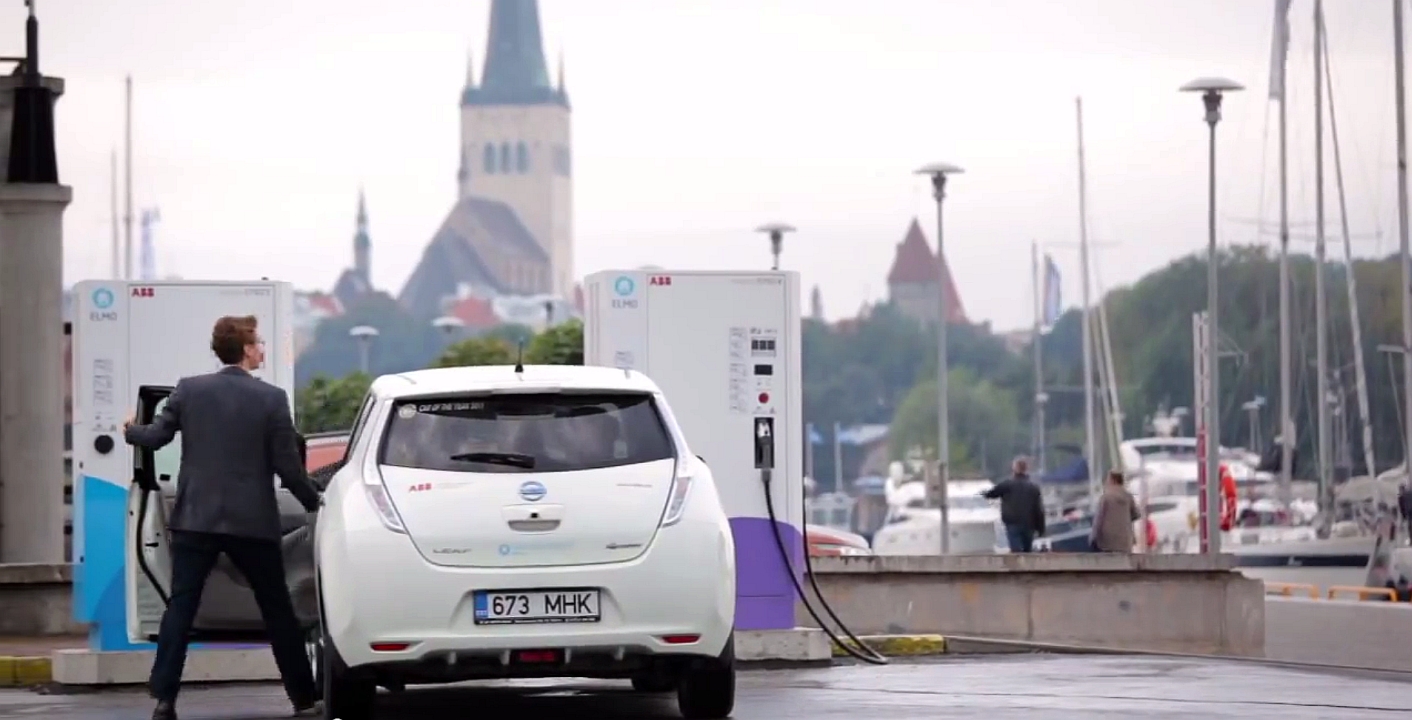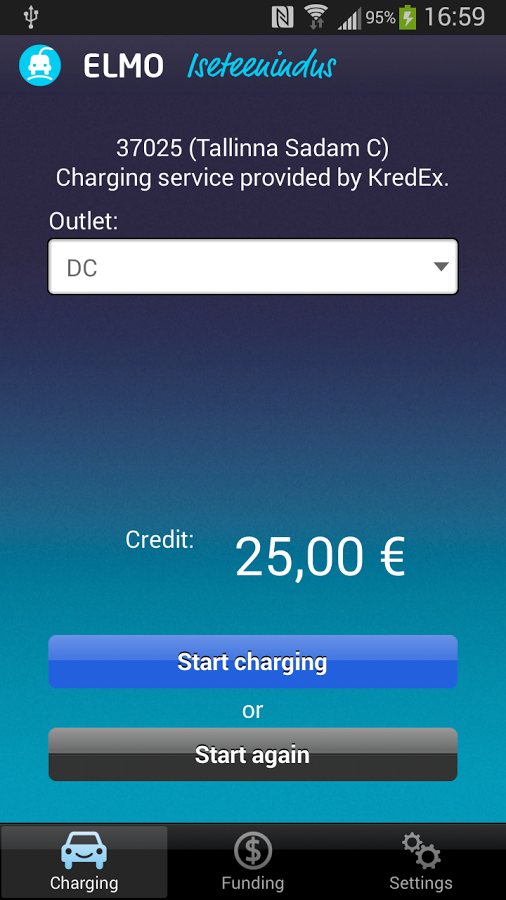Electric vehicle charging network
In the beginning of 2013 Estonia launched the first nationwide fast-charging network for electric vehicles. The Technology of fast-chargers was provided by ABB, the leading Swiss power and automation technology group, and consists of 165 connected direct current (DC) fast chargers with CHAdeMO standard connectors. Chargers were placed within a year, covering urban areas with more than 5000 inhabitants and major roads. It is the highest concentration of DC chargers in Europe. You are never more than 60 km apart from closest charging station, so it is possible to travel everywhere in the country not depending of charging station range.
“The fact, that recharging is so easy, is one of the main reasons that more and more Estonians will decide in favor of electric cars in future,” said Estonia’s Minister of the Environment, Keit Pentus-Rosimannus. “Our entire transport policy should be based on the notion that environmentally friendly travel is the cheapest and simplest option.” DC fast chargers need only 15-30 minutes to fill an average electric vehicle (EV) battery. The only problem is, that CHAdeMO charging standard is not generally accepted in EU and is more widely spread in Japan. But it´s still possible to use adaptors. 165 fast-chargers covering the whole countryEstonian Kredex Foundation procurement ended by selecting ABB as the best to offer fast-charger network and operating partner in 2011. ABB´s offer was best by the volume of 6,6 million euros (without VAT). Other companies participated in the procurement were Hitachi Ltd from Japan, joint offer from Citelum (France) and Marubeni Corporation (Japan) and another joint offer from Ericsson Eesti AS (Estonia) and Fortum Asiakaspalvelu Oy (Finland).
„There is no other country who has nationwide EV charging stations network,“ said Foundation Kredx leader Andrus Treier on the opening of first fast-charger station in Tallinn. „It is a great possibility to our engineers to have experience of building this kind of network and talk to development of EV industry more widely.“ Fast-charging network was financed with contract between Estonian government and Mitsubishi Corporation from not used CO2 quota, what was sold by Estonian government to Mitsubishi. With the same contract, Mitsubishi provided EV cars Mitsubishi i-MiEV to Estonian social workers and Foundation Kredex provided subsidizing for the purchase of electric cars. For that money EV deomo center was built in Tartu, too. How to use the nationwide electric charging network?Users of charging network must enter into contract with ELMO – this is the operator of network. Contract can be made over Internet. It is possible to digitally sign the contract and there is no need to enter physical offices of company. Digital signature is widely spread in Estonia thanks to digital ID card. Even more – it´s possible to digitally sign contract by m-ID – digital signature that is integrated within mobile phone SIM card.
Fast charger can charge EV batteries to 80-90% and EV-s can pass until 140 kilometers with single charge. It depends of course on weather, too: minus degrees at winter time reduce significantly battery volume and thoroughfare.After entering into contract,you can select from three different options. Two of them are with monthly fee – 10 or 30 euros. Combined packet includes 10 euros monthly fee and charging fee 2,5 euros per use. Max time of charging is limited to 1 hour. Volume packet includes monthly fee 30 euros and 150 kWh charging for free. Third – Flex packet is not including any monthly fee, but have higher price for charging – 1,5 euros for less than 10 minutes of charging, 3 euros for less than 20 minutes and 4,5 euros for over 20 minutes of charging. Chargers are placed to all urban areas with more than 5000 inhabitants and on major roads. Distance between chargers is 40-60 km, so the network covers all the country and you can go everywhere with single charge. Fast chargers are on gas stations, near the cafes and bars, shopping centres and banking offices. In mayor cities there are 27 fast-charging stations in Tallinn, 10 in Tartu, 5 in Pärnu and 2 in Narva. As You see on the map, fast-chargers are covering the whole country, including bigger islands
Technically speaking – smart and secure fast-chargingABB’s Terra 51 DC fast-chargers are smart – they can be controlled by cars. It means that car can order fast-charger to do exactly what car wants – what power to use, how long to charge and to use secure connection. If there is possible electric leak, charging station stops charging. Thanks to smart stations car batteries are not overcharged and overheated. During the charging it is not possible to separate charging connector from car – user must end the process. There are two options for charging: via CHAdeMO standard DC charger (50 kW) or via Type 2 (Menneks) AC connector (22 kW). Authorization for use can be done by three ways:
Car with 16 kWh battery can be charged from 0-80% by 20-40 minutes. Most popular electric cars in Estonia are Nissan Leaf and Mitsubishi iMiEV. They can be charged in 35 minutes (Nissan) and 25 minutes (Mitsubishi). In winter time the charging time may be longer – until 60 minutes. Electric vehicle purchase may be cheaperEstonian Electromobility Program called ELMO supported the purchase of electric vehicles until August 7, 2014. There were average 40 requests per month for purchasing electric vehicles, 107 in July and 80 in the first six days of august 2014. According to Estonian External Trade and Entrepreneurship Minister Anne Sulling interest to program for buying subsidized electric car was high and state aid for the purchase is justified. “The initial strong mistrust of electric cars has been dispelled, and the Estonian people dare to use an electric car in the cold winter or hot summer,” says Minister Sulling in press release. Kredex supported elecric car purchasing with 10,5 million euros: approximately 16 500 euros per car during 2011-2014. There were over 650 electric cars purchased. Most popular was Nissan Leaf. How to rent electric vehicle in Estonia?Even if you are not deciding to buy electric car, ELMO has option to rent it on daily basis. These rental cars are using the same charging infrastructure covering the country and rental process is very simple. You need working ID-card, driver´s licence and mobile phone. You must be a registered user, but this can be done as simply as registering to ELMO electric charger network. After registration, You receive activation code in Your given mobile phone number and then You can select a car. Available cars are seen on map, and you can find the closest available there. After selecting „rent a car“ you receive short message confirming that you can use the car. you receive three phone numbers with this message: one for opening car doors, second for lock doors and third for finishing the rent. You can finish the rent, driving to nearest fast charging station. If you end somewhere else, additional charges may be added. Netherlands are next?Company Fastned started to develop and build up EV charging network in Netherlands in July 2013. This is the third country in Europe with nationwide charger network. Belgium is the second, where fast charger network buliding started in 2012 with 50 charging stations. Fastned will build 200 charger stations to the 41’500 km2 country, what is approximately the same size as Estonia. Fast chargers are located not more than 50 km from each other.Charger network is ready to use in 2015 and will support multiple standards used by European, Japanese and American cars. SuperchargingIn 2016, Estonia will receive it´s first Tesla Supercharger station, what is free for Tesla car owners. One of the first Estonian Tesla owners, Mario Kadastik, who worked as scientist in CERN in Geneva, described Estonian fast charger network as useful but thanks to very long range of Tesla on single charge, he uses charging stations very rarely. If there are no long journeys to another part of Estonia, it is always possible to drive with fully loaded batteries from home to back home. For instance, You can drive to Tartu – the second biggest town of Estonia - 187 km away from Tallinn - without charging. Journey from Tallinn to Tartu with single home charging is possible even in coldest days at winter, Kadastik says. „But what I am missing is charging time for more than a hour. I had situations when it was1 necessary to charge overnight, but fast chargers are limited to a few hours.“ Different standards may cause problemsThere are many different standards used worldwide for electric car charging. Estonian charging network uses CHAdeMO standard, but European Commission proposed Combo2 standard as European Union common standard for chargers. This standard is not used very widely in the world. If that happens, the charging networks in many countries must rebuild the chargers to support Combo2. Great Britain have the biggest network of fast-chargers in Europe with 278 stations now. Second largest is France with 181 stations. Estonian northern neighbour Finland plans to build 22 charging stations this year, Sweden 35 and Russia 10 stations. Other Estonian neighbours – Latvia and Lithuania do not have any plans to build nationwide charging network.
09.11.2014 | Autor
Kaido Einama
-> Drucken
|
MEHR ZU DIESEM THEMA
TOP ARTIKEL
TOP AKTUELLsoeben aufgeschaltet
MEIST GELESEN
|
||||||||||||||||||||||||||||||||||||||||||||||||
|
|
|||||||||||||||||||||||||||||||||||||||||||||||||
|
|
|||||||||||||||||||||||||||||||||||||||||||||||||








